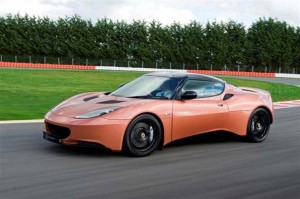There seems to be no limit to the number of awards handed out in the auto industry these days. But what sort of vehicle might the engineers who actually design our cars, trucks and crossovers give the nod to? This year, it’s the Lotus Evora 414E Range Extender Hybrid that wins the SAE World Congress Tech Award.
The timing of the Tech Award coincides with the industry geek fest held at Detroit’s Cobo Hall each spring at which time all sorts of new technologies are introduced. So, it’s perhaps no surprise that a plug-in vehicle takes the honors for 2013 – though Lotus is not a name one normally associates with green machines.
Sponsored by the SAE’s Automotive Engineering International Magazine, the award is supposed to highlight a mix of design and engineering innovation, “uniqueness,” potential for real-world applications and other benefits to both customers and the auto industry.
“The Lotus Evora 414E was chosen for the AEI Tech Award for its unique combination of a multimode virtual seven-speed shift scheme, torque-vectoring stability control, and energy and power management optimization schemes,” explains Kevin Jost, Editorial Director of Automotive Engineering International Magazine.
The Lotus Evora 414E is clearly not to be confused with your run-of-the-mill green machine. It can launch from 0 to 60 in just 4.4 seconds – or less than half the time it takes the Chevrolet Volt extended-range electric vehicle to get there.
Credit a drivetrain that pairs a 1.2-liter three-cylinder engine with twin electric motors, one for each of the rear wheels. The combined output is a hefty 408 horsepower and 590 lb-ft of torque.
The layout not only allows the vehicle to operate in pure electric mode, or as a more conventional hybrid, but it also permits torque vectoring – shifting power left or right to help enhance cornering.
The driving experience is enhanced, the editors note, by the use of a paddle-shift transmission that can simulate the behavior of a conventional 7-speed gearbox. The system, meanwhile, also helps recover energy normally lost during braking and coasting, storing it in the little sports car’s lithium-ion battery pack. That pack holds enough energy for about 30 miles in electric vehicle mode, while combined battery and gas range is abut 300 miles.
The Lotus Evora Plug-in also uses a HALOsonic sound synthesis system to deliver a more traditionally sporty audio note that SAE editors credited for “enhanced…driver involvement” while also helping “improve pedestrian safety outside the vehicle.”
The federal government is, in fact, finalizing rules that will require battery cars to create noise to alert pedestrians and bicyclists.
Unfortunately, Lotus has only a handful of the Evora 414E hybrids running right now. There’s no set plan for production, though “that’s certainly still a possibility,” according to spokesman Kevin Smith. You’re probably more likely, he suggests, to see the plug-in drivetrain — or at least some of its components — supplied to other automakers in the near-term.

